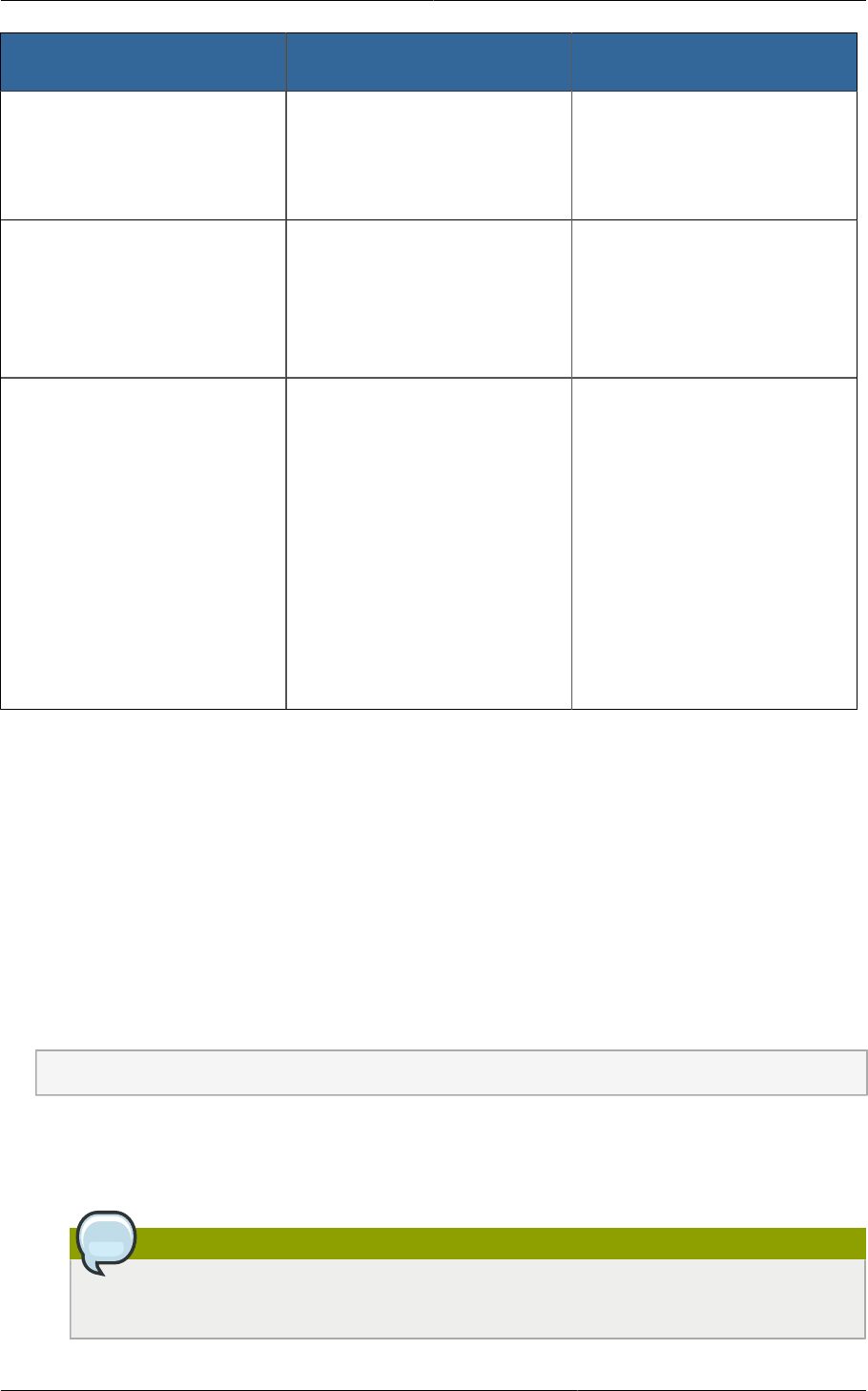
Chapter 16. Managing Networks and Traffic
156
NetScaler ADC Type Description of Capabilities CloudPlatform Supported
Features
act as application firewall and
load balancer
supported without limitation.
In basic zones, static NAT,
elastic IP (EIP), and elastic
load balancing (ELB) are also
provided.
VPX Virtual appliance. Can run as
VM on XenServer, ESXi, and
Hyper-V hypervisors. Same
functionality as MPX
Supported on ESXi and
XenServer. Same functional
support as for MPX.
CloudPlatform will treat VPX
and MPX as the same device
type.
SDX Physical appliance. Can create
multiple fully isolated VPX
instances on a single appliance
to support multi-tenant usage
CloudPlatform will dynamically
provision, configure, and
manage the lifecycle of
VPX instances on the SDX.
Provisioned instances are
added into CloudPlatform
automatically – no manual
configuration by the
administrator is required. Once
a VPX instance is added into
CloudPlatform, it is treated the
same as a VPX on an ESXi
host.
16.7.2. Configuring SNMPCommunity String on a RHEL Server
The SNMP Community string is similar to a user id or password that provides access to a network
device, such as router. This string is sent along with all SNMP requests. If the community string is
correct, the device responds with the requested information. If the community string is incorrect, the
device discards the request and does not respond.
The NetScaler device uses SNMP to communicate with the VMs. You must install SNMP and
configure SNMP Community string for a secure communication between the NetScaler device and the
RHEL machine.
1. Ensure that you installed SNMP on RedHat. If not, run the following command:
yum install net-snmp-utils
2. Edit the /etc/snmp/snmpd.conf file to allow the SNMP polling from the NetScaler device.
a. Map the community name into a security name (local and mynetwork, depending on where the
request is coming from):
Note
Use a strong password instead of public when you edit the following table.


















